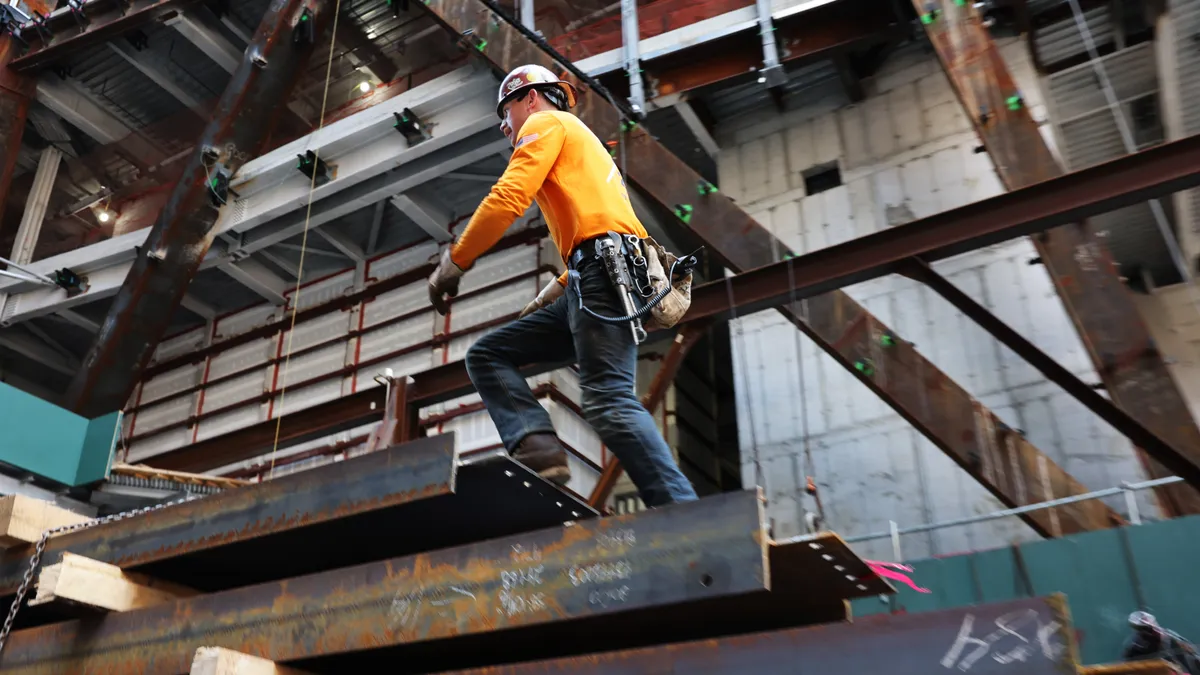UPDATE: AUG. 11, 2023: The Department of Labor on Thursday made public its final rule updating Davis-Bacon prevailing wage regulations. The 716-page document says that the rule will be published in the Federal Register on Aug. 23, and will be effective 60 days from then, Oct. 23.
It notes that the updates will apply to contracts entered after this date but, with limited exceptions, will not affect contracts entered into before then. Despite the upcoming publication of the final rule, the changes are sure to face legal challenges, according to Roll Call.
The department received 40,938 comments during a 60-day comment period that began in March 2022, according to the document, which noted the reasoning behind the update.
“As the first comprehensive regulatory review in nearly 40 years, revisions to these regulations will promote compliance, provide appropriate and updated guidance and enhance their usefulness in the modern economy,” the document reads.
Original story continues below.
Dive Brief:
- The Department of Labor announced Tuesday that it will publish a rule updating the Davis-Bacon Act, which sets the prevailing wages contractors must pay workers on federal projects.
- The rule, first announced in March 2022, will restore the DOL’s definition of prevailing wage to make it equivalent to the wage paid to at least 30% of workers, rather than 50% of workers, in a given trade in a locality, according to a White House fact sheet.
- The move is aimed at raising the hourly earnings of workers for prime contractors and subcontractors on projects that receive federal funding through legislation such as the Infrastructure Investment and Jobs Act and the CHIPS Act, but construction groups said it will raise the cost of infrastructure projects for taxpayers.
Dive Insight:
The Davis-Bacon Act, originally passed in 1931, uses pay surveys administered by the DOL to set the prevailing wage in a federally funded project’s location. The process can be complicated and cumbersome for contractors and has elicited concerns that it skews wage rates.
Under the current process, at least 51% of surveyed wages need to be within a “same or similar” margin. If they’re not, the weighted average — as opposed to a simple average — of all wages is used. That means more frequent occurrences of low wages could drag down the overall rate.
To remedy that, DOL’s rule returns to the system used until 1983, when the last changes to the act were made during President Ronald Reagan’s first administration. At that time, the overhaul was viewed as a major blow to organized labor.
Process changes
The new rule also makes the process of updating prevailing wage rates easier, according to the DOL, by giving the department the authority to adopt prevailing wages determined by state and local governments, issue wage determinations for labor classifications where insufficient data was received through its wage survey process and update outdated wage rates.
Lastly, it adds an anti-retaliation provision in contract clauses to protect workers who raise concerns from being fired or punished. It also strengthens DOL’s ability to withhold money from a contractor in order to pay employees their lost wages.
The new rule is sure to face legal challenges, according to Roll Call.
The announcement was made Tuesday morning in Philadelphia by Vice President Kamala Harris and Acting Labor Secretary Julie Su, who also met with union construction workers and national and local union leaders.
Later, the officials were expected to receive an on-site briefing at a construction site at the I-95 interchange with the Betsy Ross Bridge, near the site of a major roadway collapse earlier this summer.
Strong reaction
Contractor groups voiced strong opposition to the announcement. Associated Builders and Contractors, which asked the administration to withdraw the proposed rule shortly after it was announced, said it increases regulatory burdens on small businesses, new industries and public works projects.
Ben Brubeck, ABC vice president of regulatory, labor and state affairs, called Davis-Bacon rules a “regulatory boondoggle” known for increasing the cost of construction, discouraging competition from small businesses and diminishing the value of taxpayer investment in government infrastructure projects, in an email to Construction Dive.
The DOL said it will mean thousands of extra dollars per year for more than 1 million workers and noted its far-reaching effects.
“These numbers will continue to grow given that nearly all of the significant construction programs contained in the IIJA, CHIPS and Science Act and Inflation Reduction Act require or strongly incentivize the use of Davis-Bacon prevailing wages,” the White House statement read.













